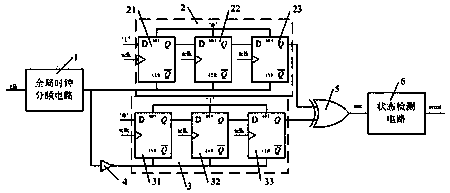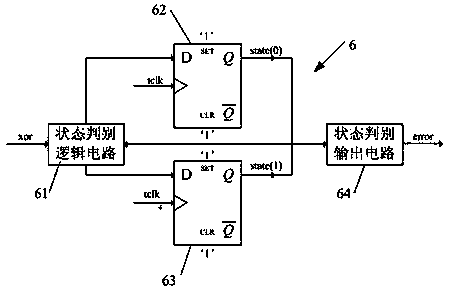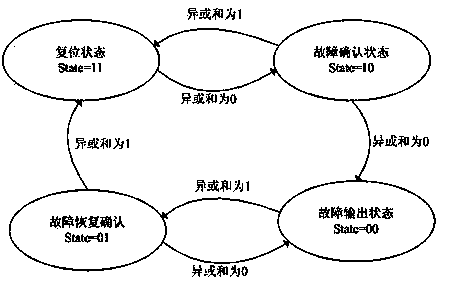FPGA global clock detection technique for manned spacecraft
A manned spacecraft and global clock technology, applied in frequency measurement devices and other directions, can solve the problem of inability to detect the validity of the global clock, and achieve the effects of rapid fault response, accurate detection and simple circuit
- Summary
- Abstract
- Description
- Claims
- Application Information
AI Technical Summary
Problems solved by technology
Method used
Image
Examples
Embodiment Construction
[0017] see figure 1 and figure 2 , the manned spacecraft FPGA global clock detection technology of the present invention is a detection circuit, and the detection circuit includes a global clock frequency division circuit 1, a first synchronization circuit 2, a second synchronization circuit 3, a NOT gate 4 and two input The XOR gate 5 at the end, wherein, the global clock frequency division circuit 1 divides the frequency of the global clock to generate a frequency-divided clock signal. In practical applications, the frequency of the global clock clk is much higher than the frequency of the detection clock tclk. The global clock frequency dividing circuit 1 can divide the global clock into the range of the detection clock tclk, and based on the concept of the present invention, the clock period of the frequency-divided clock signal is at least three times less than the clock period of the detection clock.
[0018] read on figure 1 , the input end of the first synchronizati...
PUM
 Login to View More
Login to View More Abstract
Description
Claims
Application Information
 Login to View More
Login to View More - R&D
- Intellectual Property
- Life Sciences
- Materials
- Tech Scout
- Unparalleled Data Quality
- Higher Quality Content
- 60% Fewer Hallucinations
Browse by: Latest US Patents, China's latest patents, Technical Efficacy Thesaurus, Application Domain, Technology Topic, Popular Technical Reports.
© 2025 PatSnap. All rights reserved.Legal|Privacy policy|Modern Slavery Act Transparency Statement|Sitemap|About US| Contact US: help@patsnap.com



